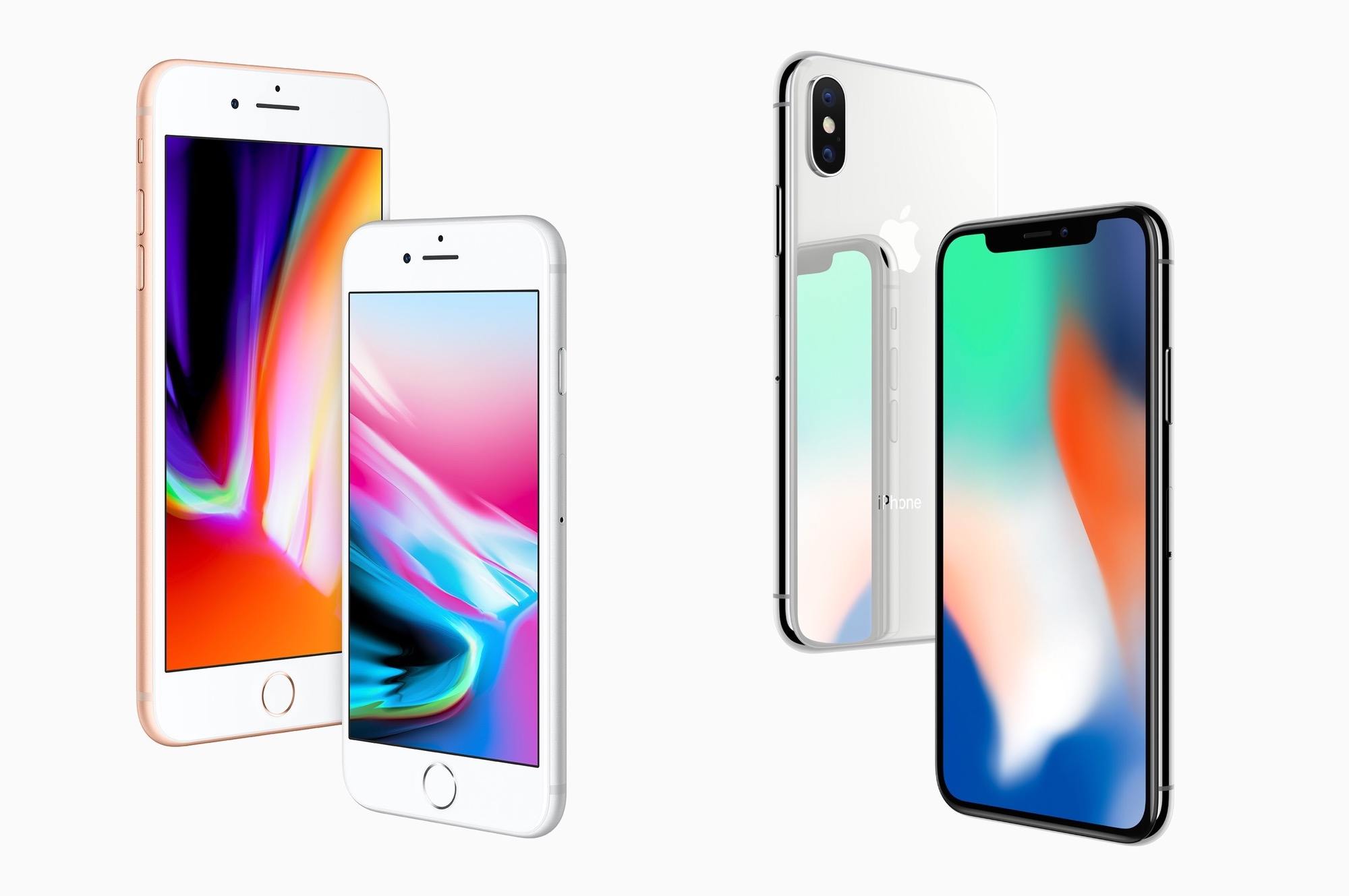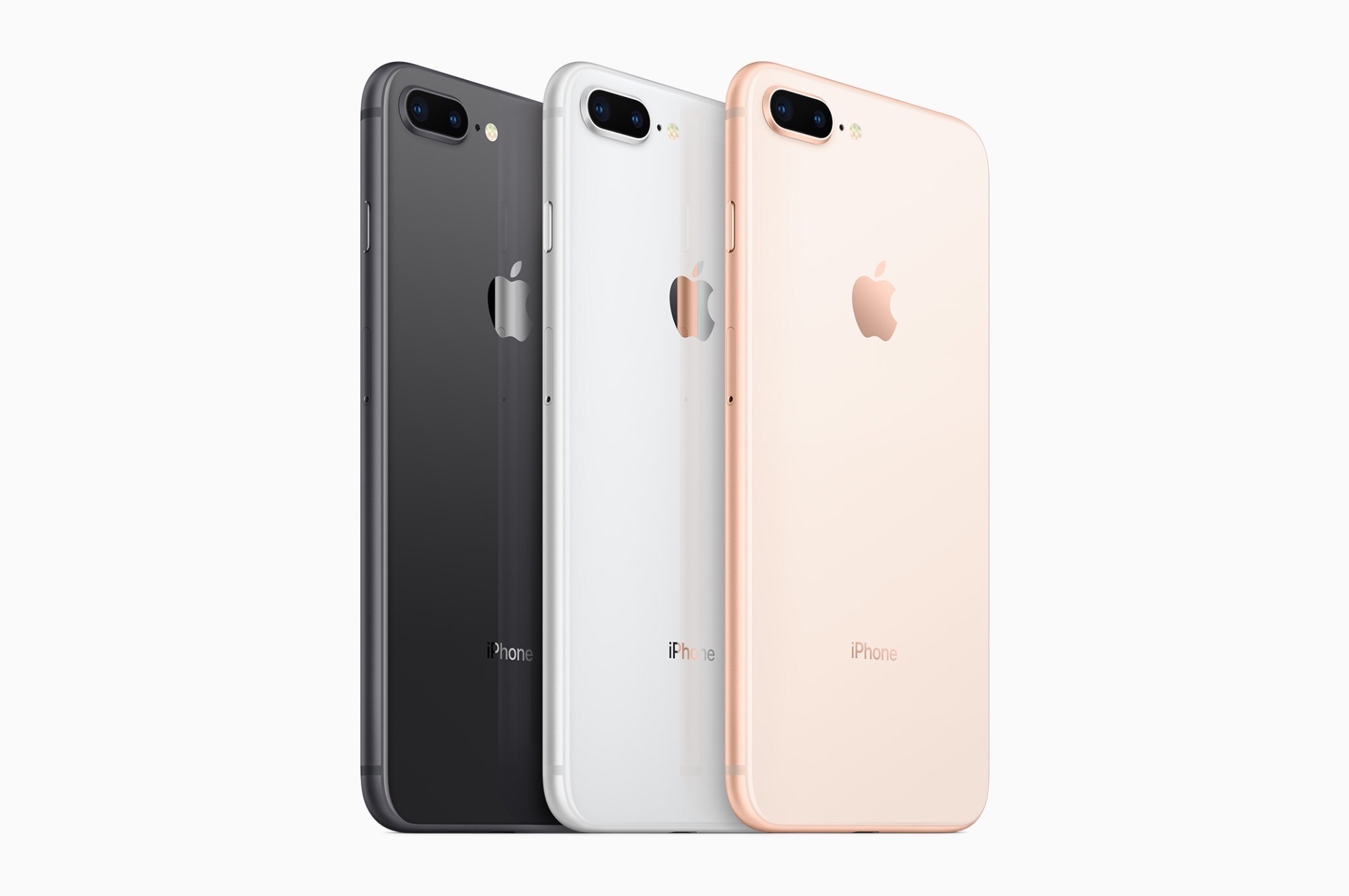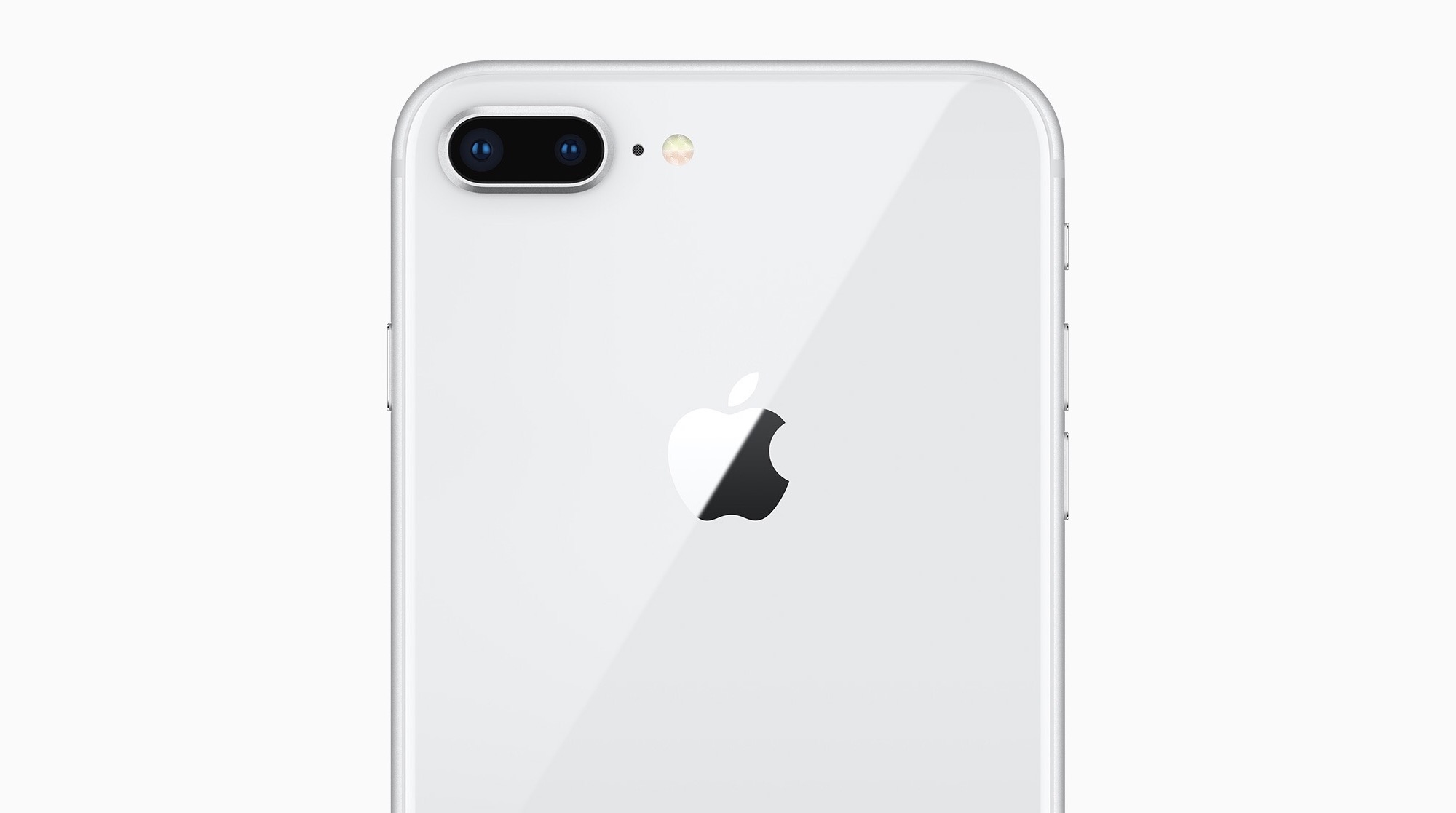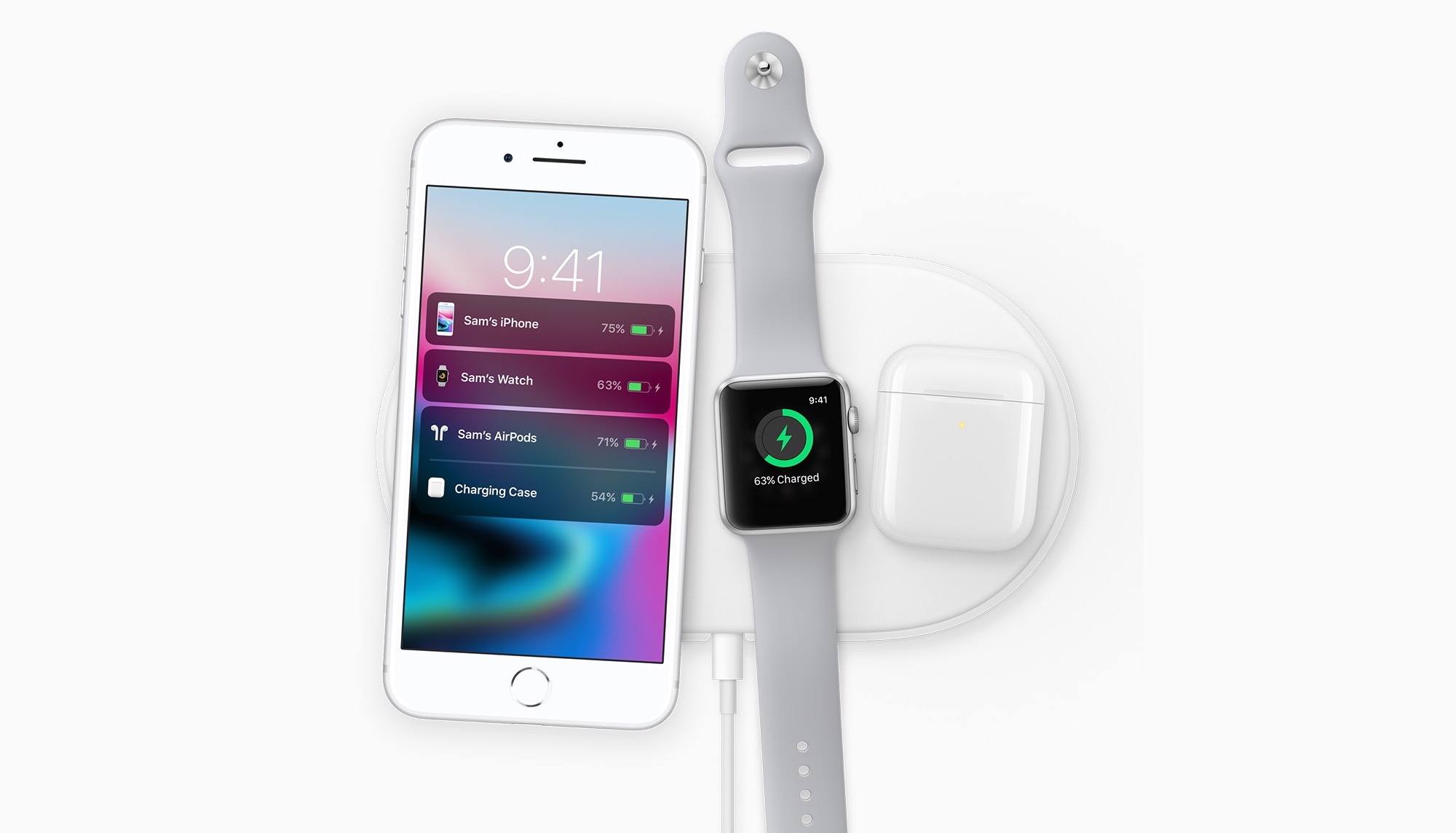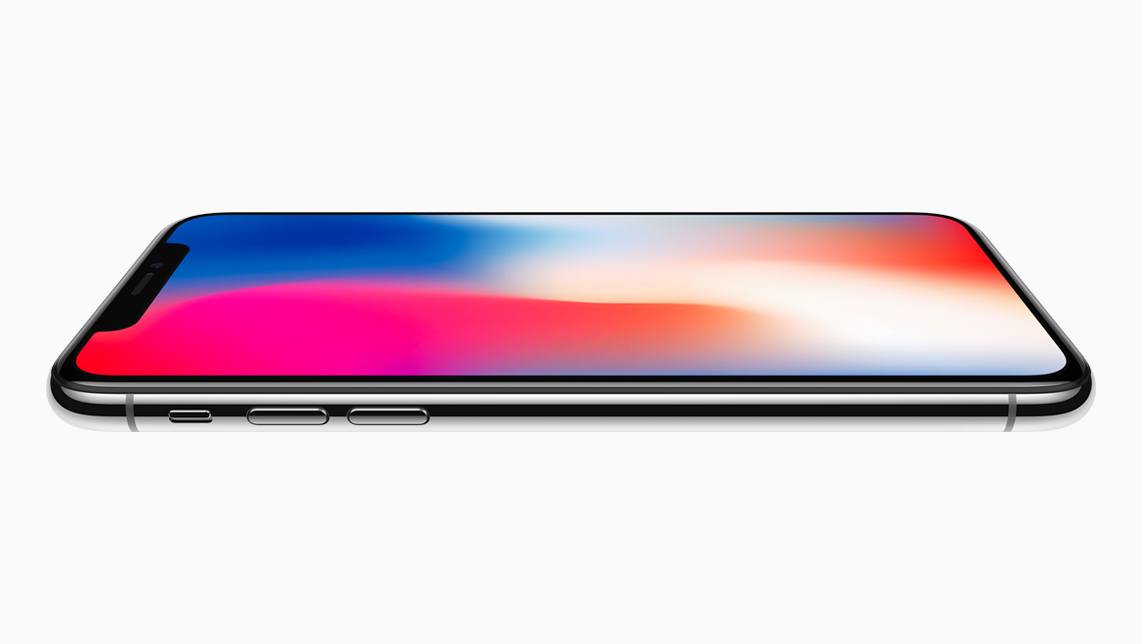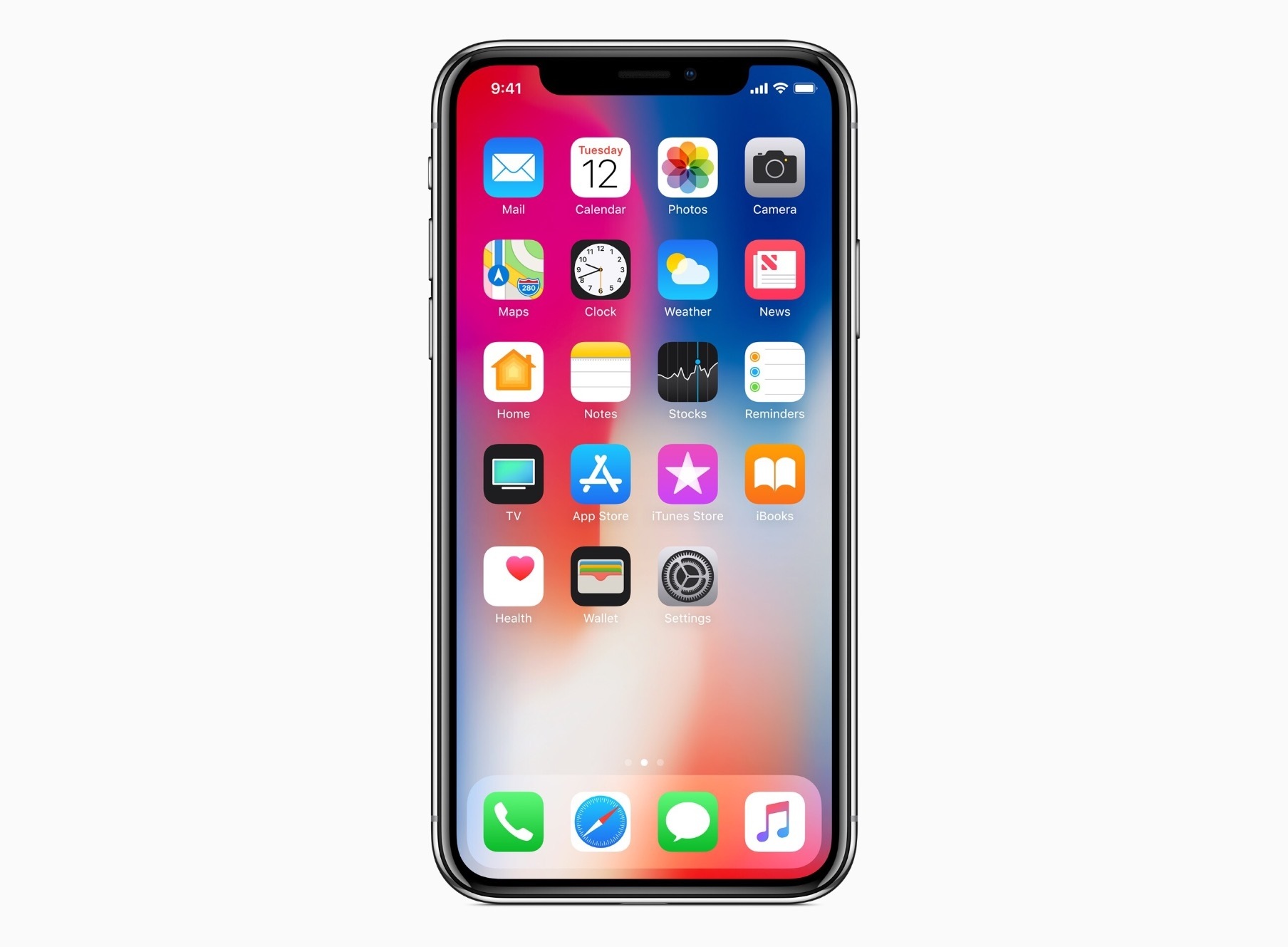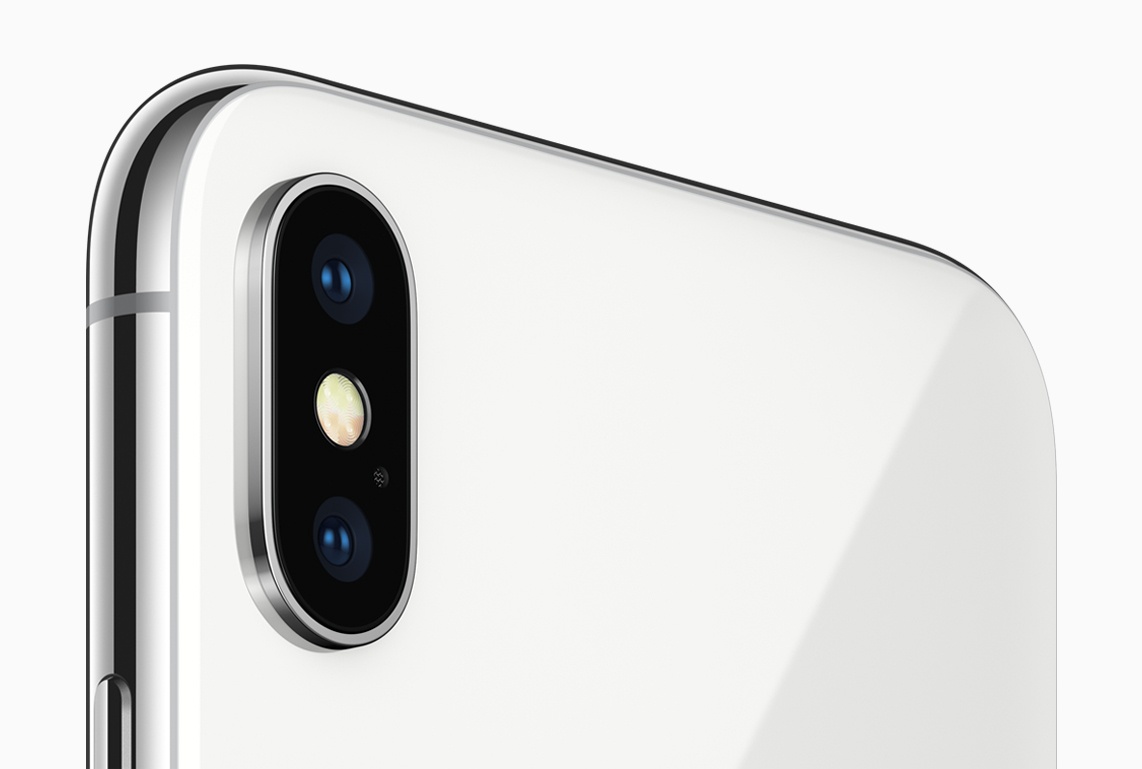This morning Tim Cook took the stage for the first time at the brand new Steve Jobs Theater within Apple Park. Following a touching tribute to Steve Jobs himself and a slew of other announcements, Cook introduced the products that everyone was waiting for: this year’s new iPhones.
Apple’s 2017 iPhone lineup has a big twist over past offerings. Rather than just releasing two models of differing size and very similar specifications, the Cupertino company has announced three new models. The iPhone 8 and iPhone 8 Plus are a fairly standard yearly update, including processor, camera, design, and display improvements, as well as a few unique and interesting new perks. Unveiled alongside these, however, is the big new thing: the iPhone X.
Apple is calling the iPhone X1 the future of smartphones, and it certainly does look futuristic. There are some huge changes in this new device for both hardware and software, but before we get there let’s review the updates to the also-brand-new iPhone 8 models. I know the iPhone X is getting most of the attention, but we shouldn’t overlook that Apple has some excellent updates to its other models as well. If the iPhone X weren’t shipping this year, Apple would still have a strong lineup of smartphones for 2017.
iPhone 8 and iPhone 8 Plus
Design
The iPhone 7 marked the first time that Apple increased the number for a smartphone without also shipping a significant design update. In previous years we saw a trend of a numerical increase alongside a design change every two years, with an “s” model in between. Last year Apple increased the number, but left the design largely unchanged.
With the iPhone 8, Apple is back on track with its normal strategy. Along with the number change, we’re also getting a new body which continues to hone in on the design language the company has been playing with throughout the last decade. The new iPhones are returning to the classic glass back panels that defined the iPhone 4 and 4s, but now the aluminum band that the glass sandwiches maintains the same soft curves of the iPhone 6, 6s, and 7. These new devices are a clear combination of these previous designs, and the result really does look better than ever.
Apple is claiming that the new glass used for these iPhones is the most durable glass ever used in a smartphone – 50% more durable than what’s found in the iPhone 7. The aluminum band along the sides of these phones is made from aerospace-grade 7000 Series aluminum, and is microscopically sealed to the glass to create a water and dust resistant casing. A 6-layer coloring process is used to make the glass match the color of the aluminum; both iPhone models will come in Space Gray, Silver, and Gold finishes.
The iPhone 8 and 8 Plus maintain their predecessors’ water resistance rating of IP67 under IEC standard 60529. If you don’t want to go research what exactly that means, I think the important parts to note about the iPhone’s water resistance are the following: you still should not charge the devices when wet, you still should not submerge them for long periods or take them more than one meter deep in water, and any water damage is still not covered under warranty. I’m still hoping that some day Apple will be confident enough to add water damage to their list of warranty coverage, but today is not that day.
The new iPhones have also received speaker updates for the second year in a row. On the iPhone 8 models you’ll get speakers with 25% louder sound and deeper bass. The speakers are still located in the same locations as they were on the iPhone 7: one in the earpiece at the top and one in the right speaker grille at the bottom.
On these devices the Home button is unchanged from last year. It is present in the same location and remains a software button, where clicks are registered via pressure and the Taptic Engine mimics the feeling of a physically moving button. Both iPhone 8 models support Touch ID in these Home buttons for unlocking and Apple Pay.
Display
The new iPhone 8 models both ship with the same display sizes as last year: a 4.7” display on the iPhone 8 and a 5.5” display on the iPhone 8 Plus. These are both Retina HD displays with wide color gamut support, but for the first time in the iPhone line they also support Apple’s True Tone technology.
True Tone debuted on the 9.7” iPad Pro – it uses a sensor to detect the ambient light around your device and adjust the white balance to fit your surroundings. This makes your display look better in a variety of different lighting environments, and Apple claims it reduces eye strain when looking at your screen.
Cameras
Just like last year, the camera is where the two iPhone 8 models diverge. The iPhone 8 Plus has the same dual-lens system that the iPhone 7 Plus debuted, which allows the phone to create a depth map on images and perform advanced effects on them. The 4.7” model has received some great camera improvements, but still only retains the singe lens system.
One of the big updates to this year’s iPhone 8 models is a brand new Apple-designed image signal processor. This processor enables the iPhone cameras to have faster low-light autofocus, improved pixel processing, and hardware multi-band noise reduction. The iPhone 8 feeds this signal processor with a 12 MP camera which has been improved with deeper pixels, a new color filter, and optical image stabilization. The iPhone 8 Plus uses dual 12MP cameras with the same features. One of these cameras has an ƒ/1.8 aperture and the other an ƒ/2.8 aperture. Both new iPhone 8 models sport 7MP FaceTime HD cameras on the front, with Retina Flash, wide color capture, and auto image stabilization.
For the dual camera system on the iPhone 8 Plus, Apple is shipping a new effect called “Portrait Lighting.” This uses the same depth-sensing technology behind last year’s Portrait Mode, but the new effect allows you to manipulate the lighting conditions shown on your subject in some intriguing new ways. Portrait Lighting uses the new A11 Bionic chip to detect faces in the foreground of photos and manipulate the lighting around them. You can create spotlight effects to illuminate a face and reduce shadows, or create shadow effects to black-out the background and highlight the subject. There is a whole series of options, and they show up at the bottom of the Camera app when this mode is enabled. You can swipe through them to view the live effect before taking a shot, or you can apply them in post when reviewing your photos later. Based on Apple’s examples, this new feature enables some striking images, and I expect it will be as popular as Portrait mode was last year.
There’s a new Quad-LED True Tone Flash on the new iPhone 8 models, and Apple is promoting a new feature that this enables called Slow Sync. Slow Sync combines a slow shutter speed from the camera with a short, strobing pulse from the flash to light up a foreground object in low light conditions while also properly exposing the background. They’re also claiming that the new flash is 40% more uniform, which should reduce hotspots in images.
On the video front, the new cameras in both models enable 4K video at up to 60 fps, and slo-mo video up to 240 fps at 1080p. While video is being recorded, the cameras will also now divide the screen into up to two million different tiles, and process these tiles individually with the powerful new image signal processor and a new Apple-designed video encoder. The ISP uses this method to reduce motion blur in both videos and images, as well as stabilizing and improving low-light quality.
Finally, the new iPhone 8 and 8 Plus are the first phones Apple has made with AR strongly in mind at the hardware level. The cameras on these devices are calibrated for AR, boosting performance in low-light scenarios at 60 fps. Motion tracking is also improved, and a new gyro and accelerometer help out as well.
Performance
As mentioned above, the new iPhone 8 models ship with Apple’s brand new A11 Bionic processor. According to Apple, this is the most powerful chip ever shipped in a smartphone, and also the “smartest.” This A11 chip includes the powerful new ISP that we discussed before, as well as a 6-core CPU and the first ever Apple-designed GPU.
The CPU includes four efficiency cores which are up to 70% faster than those of last year’s A10 Fusion chip. It also packs two performance cores which are up to 25% faster than the A10 Fusion. The chip works to keep battery life long by using the efficient cores as much as possible, but switches to the performance cores when the system is being taxed. The new GPU is up to 30% faster than the GPU on the A10 Fusion.
Along with the intelligent features of the ISP and the management of its cores for battery life, the other place that makes the A11 Bionic chip “smart” is in the AR realm. This chip is where all of the calculations take place to determine flat surfaces and position objects on them, and Apple claims that the AR capabilities of the new iPhone 8 models are far greater than before.
Despite all of the above, Apple still claims that both iPhone 8 models will get the same battery life as iPhone 7 models. For the iPhone 8, talk time will be up to 14 hours of battery, internet use up to 12 hours, video playback up to 13 hours, and audio playback up to 40 hours. The iPhone 8 Plus will get talk time up to 21 hours, internet up to 13, video up to 14, and audio up to 60 hours. A big new change here though is that both iPhone models are now capable of fast-charging. This means that if you have one of Apple’s 29W or higher USB-C Power Adapters, you can charge an iPhone 8 or an iPhone 8 Plus up to 50% power in just 30 minutes.
Wireless
Speaking of charging, the glass backs on these new iPhones have opened the door for another new charging technology: wireless. Apple is using the Qi wireless charging standard to enable iPhones for wireless charging through any Qi-compatible charging mat. While Apple isn’t selling any charging mats of its own at this time, there are a variety of third-party options available.
Apple has announced that it is working on its own charging mat called AirPower, which will enable charging multiple devices at once (a new AirPods case and the Apple Watch Series 3 will be Qi compatible as well). Unfortunately, this charging mat is not ready at this time, and Apple has only said that it will be released “next year.”
Pricing and Release
The iPhone 8 will be priced starting at $699 for a 64GB model, and will also be available in a 256GB model for $849. The iPhone 8 Plus will run $799 for a 64GB model or $949 for 256GB. Preorders on both of these iPhones will begin on September 15, and they will begin shipping on September 22.2
iPhone X
The new iPhone 8 and iPhone 8 Plus are no slouches. As I said already, if those were the only two phones that Apple released this year, they’d have a great lineup to offer. As it is, when Tim Cook returned to the stage after the iPhone 8 introduction, he had one more thing to announce.
The iPhone X is the future of iPhone. With its all-screen display, advanced internals, and special integrations with iOS, it is the phone that Apple has been working toward since the original iPhone – ten years ago.
Design and Display
The most striking aspect of the iPhone X design is, of course, the screen. At 5.8” on the diagonal, the screen extends across the entire face of the device, with no bezel whatsoever. At the top sits a thin notch cut out of the surrounding screen, which houses an advanced array of cameras and sensors that need to be located on the front of the device. At 448 pixels per inch (2436x1125px), this display has the highest pixel density Apple has ever shipped in an iPhone. It also marks the first time that an iPhone has used an OLED display.
Apple claims that the OLED display on iPhone X is a special kind of screen which includes all the advantages of OLED displays with none of the drawbacks. OLED technology allows turning off pixels that are black, which leads to greater power efficiency and much deeper black levels in pictures. Classic OLED displays can sometimes struggle with low contrast, brightness, and color diversity, but Apple says that they have solved these problems. Apple’s OLED display has high brightness, a 1,000,000 to 1 contrast ratio, wide color gamut support, 3D Touch, True Tone, and more. Altogether, Apple is referring to it as the new “Super Retina Display.”
On the iPhone X, the body and the display are as close as you can get to being merged together in a single entity. The display has no sharp corners, but instead curves at the edges to trace the outline of the device itself. Thus, images fill the face of the phone completely, expanding all the way to the top and around either side of the notch. The bottom of the device has no Home button, so the display stretches all the way to the bottom edge.
The sides of the device match the curvature of the iPhone 8, but the iPhone X subverts the classic aluminum for stainless steel. The backside is all glass, the same strengthened glass as the iPhone 8, and this opens the device up for wireless charging as well. Unlike the iPhone 8, iPhone X will ship only in two colors: Space Gray and Silver. The device has the same water resistance rating as this year’s other offerings, and its warranty does not cover water damage either.
The iPhone X retains its volume buttons and mute switch on the left side, and the Lock button on the right. The Lock button, however, has been slightly elongated and redubbed as the “Side Button,” in the same parlance used for the Apple Watch.
Interface
The Home button has been a core part of the iOS operating system forever, so it’s a pretty big deal to see this going away for the first time. The big question leading up to this announcement surrounded how iOS would be changed to cope with this removal. The answer: with a gesture.
On the very bottom edge of the new iPhone X interface, a thin drag handle is shown at pretty much all times. When this handle is dragged up, the app in the foreground will be dragged up as well, and upon release the Home screen will slide up into the frame. If you pause briefly while sliding, you can release to see the multitasking switcher instead of returning home. Basically, it’s a swipe up from the bottom to go home, or a swipe up with a pause to go to multitasking.
On stage, Craig Federighi said that once you’ve done this, there’s no other way. We’ll find out for sure once we get our hands on these devices, but watching it in action sure looks nice. As an added bonus, the handle at the bottom can be swiped horizontally to either side to switch back and forth between apps immediately – the same functionality as the four-finger swipe on an iPad. With the power of the A11 Bionic chip running this phone, all these swipes and movements should be extremely responsive as well.
Another key aspect of the iOS interface which used to be controlled through the Home button is Siri. While you can of course still access the virtual assistant by saying “Hey Siri” to your iPhone X, accessing it via a button has now been remapped to the Side Button. In fact, the Side Button has picked up most of the Home button’s extra functions (this is why they renamed it to something ambiguous). One press on the Side Button will still lock the iPhone X, but now pressing and holding it will trigger Siri, pressing it twice will open Apple Pay, and pressing it three times will activate the Accessibility Shortcut.
Control Center has been moved to make way for the Home gesture, and it is now accessed by swiping down from the top. Slightly confusingly, you access Control Center specifically by swiping down from the top on the right side of the notch. If you swipe down from the left side of the notch you will open Cover Sheet (formerly known as Notification Center) instead.
Face ID
The last, and arguably most important, function of the Home button on previous iPhones was unlocking the device. On the iPhone X, with the Home button removed, we say goodbye to the Touch ID sensor as well. In its place is a brand new technology which Apple has dubbed “Face ID.”
Face ID is exactly what you’d think it is. Rather than scanning and storing your fingerprint data to authenticate you with a button, the iPhone X scans your face instead. With that data stored, all you have to do is look at your device in order to unlock it.
This technology works using a series of advanced sensors which are all located in the notch on the phone’s display, dubbed the TrueDepth camera system. Working together, a flood illuminator, infrared camera, dot projector, and the front camera on the phone will create a mathematical model of your face. This model is then run through a series of neural networks via the new “neural engine” on the A11 Bionic chip to securely and accurately identify you. Apple claims that their system is protected against being accessed using a picture of someone, as well as from wearing a fake mask that resembles someone’s face. Apple stated during the keynote that the chances of someone else’s face being able to unlock your phone is 1,000,000 to 1. This is quite a large contrast to Touch ID, where the chances of someone else’s fingerprint unlocking your phone are only 50,000 to 1.
The Face ID system will work in all the same places that Touch ID works: unlocking your phone, unlocking secure apps, and authenticating for Apple Pay. To set Face ID up you just point the front-facing camera at yourself and move your face around while the circle interface on the screen fills in. Once the circle fully fills you’ll be good to go, which sounds like it will be much less finicky than setting up Touch ID has always been. Unfortunately, at least at the beginning, Face ID will only be able to hold one person’s face for authentication. If you’re someone who reserves one of your Touch ID fingerprint slots for a friend or significant other, you’ll either have to give up your passcode or stop allowing them free access to your device.
The last big thing to note about Face ID is that it requires your attention in order to unlock. This is a security feature so that people can’t just point your phone at you to gain access to your device. You have to have your eyes open and be looking at the iPhone X in order to gain access. I understand the advantages of this and the security precautions behind it, but it is one area where I feel like the new system might have some drawbacks from Touch ID. If Apple’s attention detection system works flawlessly, then this could be great, but we’ll have to wait until the device is released to find out for certain.
Cameras
The iPhone X features an improved rear-facing camera pairing over the iPhone 8 Plus, with the X’s ƒ/2.4 telephoto camera besting the 8 Plus’s ƒ/2.8. The high-end model also includes optical image stabilization with its telephoto camera, which the 8 Plus does not. There’s an aesthetic change too: the iPhone X positions its dual cameras vertically rather than horizontally in the top left corner. Support for Portrait Lighting mode and the other great features described above are all present on the top-of-the-line phone, but the iPhone X has another extra trick up its sleeve.
On the front of the iPhone X is a new TrueDepth camera. This camera was added as part of the security features for Face ID, but it has the added bonus of enabling all of the great depth mapping features that the rear cameras support for the front cameras as well. With the TrueDepth camera present, you can take Portrait and Portrait Lighting selfies, and also play with the new Animoji feature.
Animoji are a new type of animated emoji which have been introduced for the iPhone X. There are twelve different expressive emoji characters, from a fox to a unicorn and a smiling pile of poop. You can use the TrueDepth camera to record yourself saying something or acting out something, and the Animoji that you choose will mimic you exactly – including your facial expressions. You can send these to friends as looping videos or even drag them out and place them as stickers in your iMessage conversations.
Animoji may not be the most revolutionary feature, but they are an example of the cool new use cases enabled by the TrueDepth camera. Apple has opened up this camera’s capabilities to third-party developers too, so they’ll be able to take advantage of the facial mapping techniques in innovative new ways.
Performance
The iPhone X runs the same A11 Bionic chip as both models of iPhone 8 do, so its performance benchmarks are mostly the same as those we already went over above. The main item to note in this category is that, despite being a smaller size, the iPhone X packs the same battery life as the iPhone 8 Plus. It also supports fast-charging up to 50% in 30 minutes, and wireless charging via the Qi standard.
Pricing and Release
The iPhone X will be priced at $999 for a 64GB model and $1149 for a 256GB model. Preorders for the device will not begin until October 27, and it will start shipping on November 3.3
Conclusion
All things considered, Apple has put out a somewhat incredible lineup of smartphones this year. The iPhone X may be stealing most of the thunder, but I think it’s definitely worth keeping in mind that most of the performance improvements are shared across both lines. The iPhone 8 and iPhone 8 Plus are excellent new phones, and will serve any user well. They might not have all the bells and whistles of the iPhone X, but they also have the tried-and-true Touch ID scanner which is fast, efficient, and effective. Sometimes waiting for the future to become the present is a better idea than leaping ahead prematurely.
With that said, the iPhone X really does look like a device from the future, and in a lot of ways that’s just awesome. Having a facial scanner on a smartphone which can be trusted enough to protect your credit card feels like something out of a movie. The TrueDepth camera’s facial mapping will change selfies forever. The OLED display is striking in a way that a bezeled display could never be. There’s no doubt that this new iPhone may have some growing pains, but there’s also no doubt that this is where all smartphones are heading. If you can afford the higher price and can wait the couple months, you could live in that future ahead of time.
Miscellany
That’s all for the big important changes, but throughout the day our team has compiled various interesting tidbits which you can check out below.
- A great Medium post by Greg Hackworth explaining how iOS apps will adapt to the new screen size of the iPhone X.
- A short Instagram video showing how videos can be displayed in two ways on the iPhone X: filling the entire screen, or letterboxed so the whole frame is visible. A double-tap of the screen switches between modes.
Video by default fits into a (16:9, etc) rectangle on iPhone X, but double-tap it to fill the whole display (under the notch) pic.twitter.com/DrW7pwVZQ1
— Steve T-S (@stroughtonsmith) September 13, 2017
iPhone X’s activity indicator ? pic.twitter.com/5sGLcbOXHD
— Arek Holko (@arekholko) September 12, 2017
My keyboard tweet was accurate too ? pic.twitter.com/93Dqfd8fWu
— Steve T-S (@stroughtonsmith) September 12, 2017
As predicted, Face ID means iPhone X knows when you’re paying attention. Keeps screen lit, reveals notifications and messages, etc. pic.twitter.com/2UI3DyfTph
— Dan Moren (@dmoren) September 12, 2017
Swiping up no longer force quits an app on iPhone X. Instead, long press (maybe 3D Touch on real device?) to switch to a “quit apps” mode. pic.twitter.com/XDfYb6Odg5
— Jeffrey Grossman (@Jeffrey903) September 12, 2017
Not shown in the keynote: Clips will have “Selfie Scenes” on iPhone X to place you into 360-degree animated backdrops. pic.twitter.com/pxLz7bSCZx
— Mike Rundle (@flyosity) September 12, 2017
Designing for iPhone X video by Apple: https://t.co/SYxZLsTuSy
An updated HIG for the X: https://t.co/tTo2MhnAJ8
Get to work folks! pic.twitter.com/ktYGsyFIju
— Sebastiaan de With (@sdw) September 12, 2017
@stroughtonsmith New “Done” button for iPhone Apps edit mode. pic.twitter.com/M6aOUVnzNh
— Harry GT (@harrygthompson) September 12, 2017
Location is next to the clock. Bluetooth? Good Q. I guess it’ll be taken away. pic.twitter.com/aXqbuffq2X
— Ortwin Gentz (@ortwingentz) September 12, 2017
Blue or green status bar will be indicated differently on iPhone X. pic.twitter.com/ziKDrijWiK
— Ortwin Gentz (@ortwingentz) September 12, 2017
#iPhoneX screenshot: Side button + Volume up
— Rene Ritchie (@reneritchie) September 12, 2017
Screenshots taken on iPhone X ignore the existence of the notch pic.twitter.com/UL2Io4yyas
— Guilherme Rambo (@_inside) September 12, 2017
Huh, the iPhone X is the first iPhone to support the Galileo satellite positional system, according to the spec sheet. pic.twitter.com/Oqu9pBgIuf
— Pete Pachal (@petepachal) September 12, 2017
Sadly, the home indicator color is controlled by the system. It automatically picks a light or dark appearance. No custom theming.
— Benjamin Mayo (@bzamayo) September 13, 2017
Interestingly, the home indicator doesn’t steal tap gestures, only edge swipes. EG: you can tap the word ‘Brightness’ to select the cell. pic.twitter.com/O4mBYrJIeN
— Benjamin Mayo (@bzamayo) September 13, 2017
Legacy apps render letterboxed on iPhone X pic.twitter.com/fcJy7vJHl7
— Steve T-S (@stroughtonsmith) September 13, 2017
You can also follow all of our Apple event coverage through our September 12 hub, or subscribe to the dedicated September 12 RSS feed.
- Past experiences tell me this is a losing battle to fight, but for the record it’s pronounced “iPhone 10.” ↩︎
-
Launch countries on September 22 for the iPhone 8 and iPhone 8 Plus are the following: Australia, Austria, Belgium, Canada, China, Denmark, Finland, France, Germany, Hong Kong, Ireland, Italy, Japan, Luxembourg, Mexico, Netherlands, New Zealand, Norway, Portugal, Puerto Rico, Singapore, Spain, Sweden, Switzerland, Taiwan, UAE, the UK, the US and US Virgin Islands.
On Friday, September 29, the Phone 8 and iPhone 8 Plus will be released in Andorra, Bahrain, Bulgaria, Croatia, Cyprus, Czech Republic, Estonia, Greece, Greenland, Guernsey, Hungary, Iceland, India, Isle of Man, Israel, Jersey, Kuwait, Latvia, Liechtenstein, Lithuania, Malta, Monaco, Poland, Qatar, Romania, Russia, Saudi Arabia, Slovakia and Slovenia. ↩︎
- Launch countries on November 3 for the iPhone X are the following: Andorra, Australia, Austria, Bahrain, Belgium, Bulgaria, Canada, China, Croatia, Cyprus, Czech Republic, Denmark, Estonia, Finland, France, Germany, Greece, Greenland, Guernsey, Hong Kong, Hungary, Iceland, India, Ireland, Isle of Man, Italy, Japan, Jersey, Kuwait, Latvia, Liechtenstein, Lithuania, Luxembourg, Malta, Mexico, Monaco, Netherlands, New Zealand, Norway, Poland, Portugal, Puerto Rico, Qatar, Romania, Russia, Saudi Arabia, Singapore, Slovakia, Slovenia, Spain, Sweden, Switzerland, Taiwan, UAE, the UK, the US and US Virgin Islands. ↩︎


